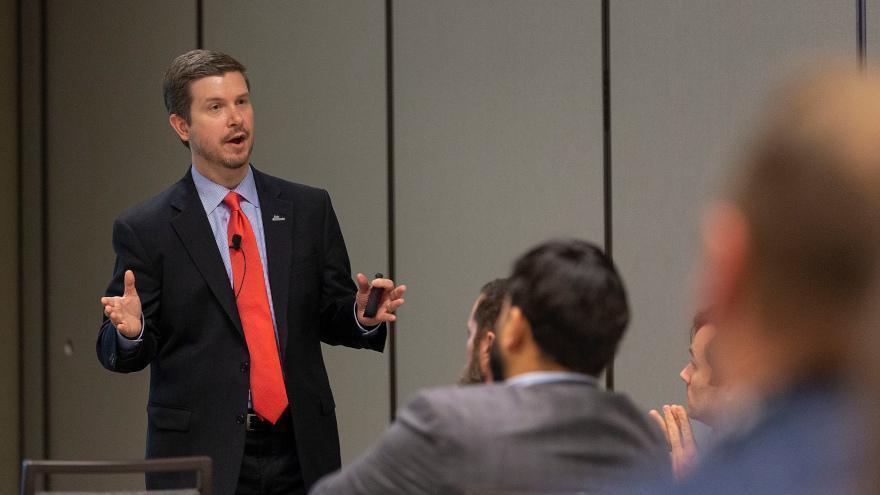Cox Automotive examines how current labor market could influence next interest-rate decision

File photo of Cox Automotive chief economist Jonathan Smoke speaking at the Auto Intel Summit in a prior year. Photo by Jonathan Fredin/Cherokee Media Group.
By subscribing, you agree to receive communications from Auto Remarketing and our partners in accordance with our Privacy Policy. We may share your information with select partners and sponsors who may contact you about their products and services. You may unsubscribe at any time.
The next opportunity for the Federal Reserve to modify interest rates arrives next Wednesday.
Cox Automotive chief economist Jonathan Smoke recapped some of the most important information policymakers likely might consider when deciding whether or not to lift rates again, beginning with the labor market.
“The May employment report represented a resilient labor market with accelerating job growth but an increasing unemployment rate and decelerating wage growth,” Smoke wrote in a blog posted pushed online on Monday. “The jobs gain of 339,000 was much stronger than expected, and figures for previous months were revised up. Most major industry sectors added jobs in May. Services again represent most of the gains.
“As has been the case for over a year, the May employment report won’t be taken well by the Fed, but at least wage growth slowed,” Smoke continued. “We will have the inflation report for May before their next rate decision on June 14. Still, the Fed will likely take a pause and make no change to policy as we wait for more evidence of changing economic conditions in response to what they have already done.
“Initial jobless claims are increasing, are higher year-over-year and higher than they were before the pandemic began. Continuing claims, representing people who previously filed and remain on traditional unemployment compensation, have declined over the last month and are below what they were before the pandemic. The labor market is not as strong as a year ago, but the metrics are varied and do not indicate major deterioration or signs of significant stress emerging,” Smoke went on to say.
Fed chair Jerome Powell mentioned the employment situation multiple times during a news conference in May following the latest rate increase that pushed it up another 25 basis points.
Subscribe to Auto Remarketing to stay informed and stay ahead.
By subscribing, you agree to receive communications from Auto Remarketing and our partners in accordance with our Privacy Policy. We may share your information with select partners and sponsors who may contact you about their products and services. You may unsubscribe at any time.
“From the perspective of monetary policy, our focus remains squarely on our dual mandate to promote maximum employment and stable prices for the American people. My colleagues and I understand the hardship that high inflation is causing, and we remain strongly committed to bringing inflation back down to our 2 percent goal,” Powell said.
Smoke recapped that the headline unemployment rate in May increased to 3.7%, the highest level since October. He added that the labor force participation rate remained steady at 62.6.
The Cox Automotive expert added that May labor participation is down 0.7 percentage points from February 2020 and represents 1.9 million fewer people in the labor force compared to February 2020 despite adding 3.7 million more jobs.
Smoke went on to mention the underemployment rate — what he said is the broadest measure of unemployment — increased to 6.7% from 6.6% in April. He also noted monthly average hourly earnings growth decelerated to 0.3% from a downwardly revised 0.4% in April and earnings growth year-over-year decelerated to 4.3% from 4.4% in April.
“Initial jobless claims are higher than a year ago and higher than before the pandemic began. Continuing claims, representing people who previously filed and remain on traditional unemployment compensation, have declined modestly over the last month and are below what they were before the pandemic,” said Smoke, who is among the speakers for this week’s Non-Prime Auto Financing Conference hosted by the National Automotive Finance Association.
“The labor market is not as strong as a year ago, but the metrics are varied and do not indicate major deterioration or signs of significant stress emerging. Moreover, jobless claims remain at historically low levels relative to the job base,” he continued.


